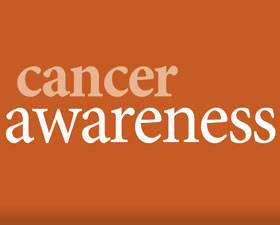Laser therapy is another tool used to fight cancer
Cancer patients are well-versed in treatment options, with chemotherapy, radiation and surgery generally at the forefront of their treatment plans. They are also very aware of the side effects of those treatments, some of which include pain, nausea, hair loss and fatigue. New advancements in laser therapy may help to change the way doctors choose to treat cancer.Lasers have been used in the medical field for many years. "Laser" is an acronym for light amplification by stimulated emission of radiation. Unlike ordinary light that has many different wavelengths spread in various directions, laser light has a specific wavelength that is very concentrated with a high-intensity. It is so powerful that it can be used to cut through some of the strongest materials, like diamonds and steel. Lasers also can be used to cut through body tissue and pinpoint very precise areas of the body.
Nowadays lasers are increasingly being used to combat cancerous tumors. The high-intensity light can be directed at a tumor and shrink or destroy it. Lasers also may be used to remove precancerous cells. They may be implemented to stop symptoms of cancer, such as bleeding or pain in nerve cells. Furthermore, lasers can be used to seal lymph vessels to prevent the spread of cancer to other areas of the body.
Lasers are typically used in areas of the body that are hard to reach or require the ultimate in precision. That's why, according to St. Joseph's Hospital in Atlanta, Georgia, laser treatment can be so effective when treating the vocal cords, skin, lungs, and genitals. They are often used in surgery by way of an endoscope, which is a small tube that allows surgical tools access to the body. Lasers actually can cut very minute areas, some less than the width of thread, which minimizes damage to surrounding tissue.
One of the other ways lasers are used in cancer treatment is through photodynamic therapy. This is a method of destroying cancer cells selectively while leaving healthy cells unscathed. Patients are injected with a chemical that reacts with argon light. Cancer cells tend to hold onto the chemical longer than healthy cells, so doctors wait for a precise time after injection and then use a red argon laser to focus on the tumor or suspected cancerous cells. A chemical reaction occurs between the injected chemical and the argon light, destroying the cancer cells. What's more, argon lasers can pass through roughly an inch of tissue without damage, so photodynamic therapy is very popular with cancers that are close to or on the surface of the skin.
The minimal damage and precision of these devices is one of the foremost advantages of laser treatment. Surgery with lasers can be done on an outpatient basis, potentially reducing some medical costs for patients. The National Cancer Institute says that patients may have less pain and scarring and may actually heal faster without much risk of infection after a laser procedure. There are three different types of lasers used in cancer treatments, and patients are urged to talk with their doctors about the therapy that is right for their situations.
Although laser therapy can be a relief to cancer patients, there are some limitations. Therapy is expensive and requires bulky, specialized equipment. Not all medical centers are equipped to provide laser therapy. Also, surgeons must have specialized training before they can implement laser therapy, and there are strict safety precautions. One significant disadvantage is that laser therapy's effectiveness does not last as long as other methods of treatment. As a result, laser treatment might need to be repeated after the initial procedure.
Laser therapy is a relatively new option doctors can consider when treating cancer. Patients can discuss the pros and cons of this therapy with their healthcare providers.




